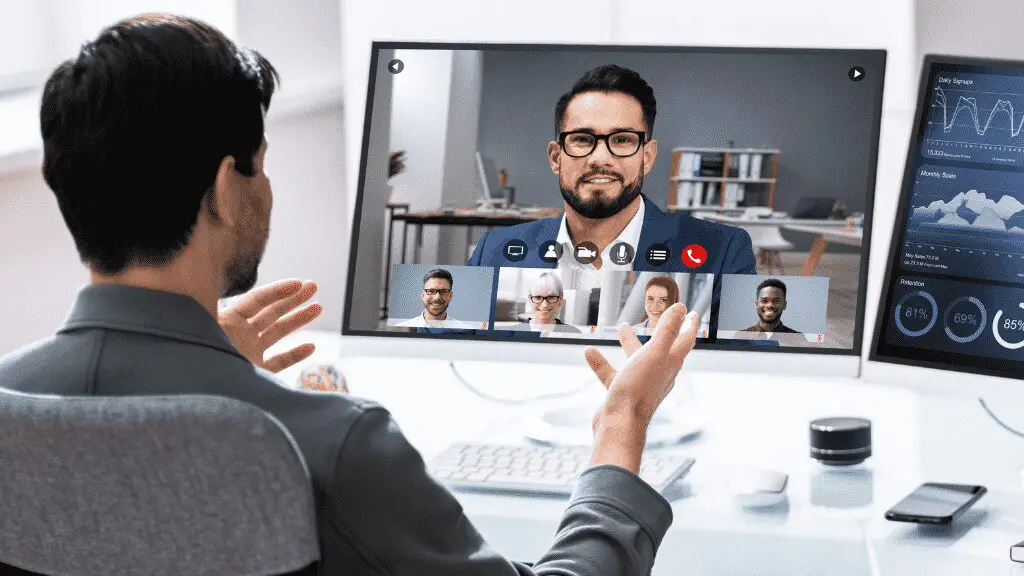In an age where attention spans are increasingly short and the competition for eyes and ears is fierce, the ability to deliver engaging presentations has never been more crucial.
According to a recent survey, 70% of employed Americans who give presentations agree that presentation skills are critical to their success at work. Yet, a staggering 75% of individuals suffer from speech anxiety, indicating a significant gap between the importance of presentation skills and the confidence to execute them effectively.
The essence of a great presentation lies not just in the transfer of information, but in the ability to inform, persuade, and engage an audience. It’s about crafting a narrative that resonates, designing slides that captivate, and delivering a message that sticks with the audience long after the presentation concludes. With the right strategies, tools, and a bit of creativity, anyone can transform a mundane slideshow into a memorable experience.
Audience
Identifying the Audience’s Demographics, Interests, and Needs
The first step to a successful presentation is knowing your audience. This means going beyond basic demographics like age, profession, and educational background.
It involves understanding their interests, the challenges they face, and what they hope to gain from your presentation. Are they seeking knowledge, solutions to specific problems, or inspiration?
This information shapes the content of your dynamic presentation, making it more relevant and engaging.
For instance, presenting to a group of seasoned professionals in your field requires a different approach than presenting to college students. The professionals might seek in-depth analyses or cutting-edge industry trends, while students might benefit more from foundational knowledge and practical advice.
Tailoring Your Message for Audience Relevance

Once you’ve identified your audience’s characteristics and needs, tailor your message to speak directly to them. This customization involves aligning your objectives with their expectations and presenting your message in a resonant language and tone. You can enhance engagement with customers who identify with the ESFJ personality type by emphasizing loyalty, personal connection, and other values that are important for them.
For example, technical jargon might be appropriate for a specialist audience but could alienate a general audience.
Consider the outcomes your audience desires and structure your sales presentation to address these directly. If your audience is looking to improve their skill set, focus on providing actionable tips and step-by-step guides. If they’re searching for solutions, highlight case studies or success stories that relate to their issues.
Engaging Questions to Consider About Your Audience
To ensure your presentation is as relevant and engaging as possible, here are some questions to consider about your audience:
What is the primary goal of my audience attending this presentation?
Understanding their goal helps you focus your content on delivering value that aligns with their expectations.
What are the key challenges or pain points my audience is facing?
Identifying these challenges allows you to position your presentation as a valuable resource for overcoming them.
What type of content will engage my audience the most?
This could range from data-driven insights for a technically savvy audience to compelling stories and visuals for a more general audience.
How can I make my presentation interactive to involve the audience?
Considering this question helps in planning interactive elements like Q&A sessions, polls, or live demonstrations, making your presentation a two-way conversation. And also, leveraging AI logo creator, can make your presentations unique and compelling.
What action do I want my audience to take after my presentation?
Having a clear call to action guides the structure of your presentation, ensuring it builds towards the desired outcome. After having a clear idea of what you want in your presentation, you can then use an AI for PowerPoint to help you create the slides.
Crafting a Compelling Narrative

The Power of Storytelling in Presentations
In the context of presentations, storytelling transforms facts and figures into relatable narratives, making complex information more digestible and engaging. A story can captivate an audience, making your message more impactful and memorable.
Here’s how to apply this structure to your presentation:
Beginning: Set the stage by introducing your topic or problem in a way that captures your audience’s attention. Use this section to establish a connection with your audience by presenting a relatable scenario or posing a compelling question.
Middle: Dive into the core of your presentation, where you develop your main ideas. This section should build upon the foundation you’ve set in the beginning by providing detailed arguments, evidence, and examples.
The middle is where you should aim to inform and persuade, using a mix of data, storytelling, and visual aids to keep your audience engaged and convey your message. For an even more efficient and creative process, consider using an AI Story Generator to assist in crafting a compelling narrative that aligns with your key points.
End: Wrap up your presentation by summarizing the key points you’ve covered and reinforcing your main message. The conclusion should leave a lasting impression, so consider ending with a powerful statement, a call to action, or a thought-provoking question that encourages further reflection.
Techniques for Creating a Memorable Narrative
To elevate your narrative and ensure it resonates with your audience, consider these techniques:
Incorporate Relatable Characters: Introduce characters or personas that your audience can identify with. This could be a customer persona in a case study or a hypothetical character facing a challenge your audience recognizes.
Use Emotional Appeals: Emotion is a powerful tool in storytelling. Weave emotional elements into your narrative to create a stronger connection with your audience. This could be through sharing personal stories, evoking empathy, or highlighting the emotional impact of your message.
Visual Storytelling: Leverage visuals to complement and enhance your narrative. Use SVGs, images, graphs, and videos that align with your story to illustrate points vividly and make abstract concepts tangible.
Vary Your Pace and Tone: Adjust your speaking pace and tone to match the mood of the story you’re telling. Slower, softer tones can be used for serious or emotional parts, while a faster pace can convey excitement or urgency.
Create Suspense or Surprise: Introduce elements of surprise or suspense to keep your audience intrigued. This could be an unexpected outcome, a twist in your story, or a shocking statistic that challenges preconceived notions.
Incorporate Relatable Characters: Introduce characters or personas that your audience can identify with. This could be a customer persona in a case study or a hypothetical character facing a challenge your audience recognizes. Using a character generator can help you create diverse, well-rounded characters that suit different scenarios and make your storytelling even more engaging.
Incorporating Multimedia and Interactive Elements

In today’s digital age, multimedia elements like videos, animations, and interactive features have become indispensable tools for making presentations more engaging and memorable. This section explores the role of multimedia in captivating your audience, how Customshow can help you leverage these elements effectively, and examples of interactive presentation elements that leave a lasting impression.
The Role of Multimedia in Engaging the Audience
Multimedia elements play a crucial role in enhancing the engagement and retention levels of your audience. They can simplify complex information, evoke emotions, and maintain audience interest throughout your presentation.
For instance, videos can bring real-world contexts into the presentation room, while animations can break down complex processes into understandable sequences. Interactive elements, on the other hand, encourage audience participation, making your presentation a two-way conversation.
How to Use Videos, Animations, and Interactive Elements in CustomShow
CustomShow, with its rich multimedia capabilities, allows you to seamlessly integrate videos, animations, and interactive elements into your presentations.
Videos: CustomShow lets you embed high-quality videos directly into your slides. Use videos to provide testimonials, demonstrate products, or convey messages from key figures in your organization. Additionally, you can embed TikTok videos to showcase trending content or engage your audience with relevant social media clips. To emphasize audience engagement, you can buy TikTok likes fast at GoreAd, ensuring your content resonates with viewers. This enhances your presentations and keeps your content dynamic and engaging. Ensure videos are short, relevant, and complement the narrative of your presentation. Luckily, there are many user-friendly video presentation maker tools available to help you create these engaging elements without needing extensive editing experience.
Animations: CustomShow lets you insert high-quality animations to bring static content to life. Animations are excellent for highlighting important points, showing transitions between topics, or illustrating how something works.
Interactive Elements: CustomShow supports interactive elements like clickable areas, which can trigger actions such as jumping to a specific slide, opening external links, or displaying logos for added brand emphasis. This feature is particularly useful for creating non-linear presentations where the audience can choose what they want to explore next.
Handling Q&A Sessions with Finesse
Q&A sessions are a crucial part of any presentation, offering an opportunity to engage directly with your audience and clarify any uncertainties. Handling these sessions with finesse not only demonstrates your expertise but also enhances your credibility. This section covers strategies for preparing in advance and techniques for maintaining control during Q&A sessions.
Preparing for Potential Questions and Answers in Advance
Preparation is key to a successful Q&A session. Anticipate potential questions by considering your presentation from the audience’s perspective. Identify areas that might require further explanation or could provoke curiosity. Here are a few strategies:
Draft a List of Anticipated Questions: Think about the questions that arise from your presentation’s content. Prepare concise, clear answers to these questions.
Practice Your Responses: Rehearse your answers to ensure you can deliver them confidently and succinctly. This practice can also help you refine your responses to be more impactful.
Prepare Supplementary Materials: Have additional slides or materials ready in Customshow that you can quickly refer to if specific questions arise. This preparation shows foresight and a deep understanding of your topic.
Conclusion
Captivating your audience through effective presentations requires a blend of thorough preparation, engaging storytelling, strategic multimedia integration, and skillful Q&A handling. By leveraging these strategies along with the powerful features of CustomShow, you can deliver presentations that not only inform and persuade but also leave a lasting impression on your audience.

